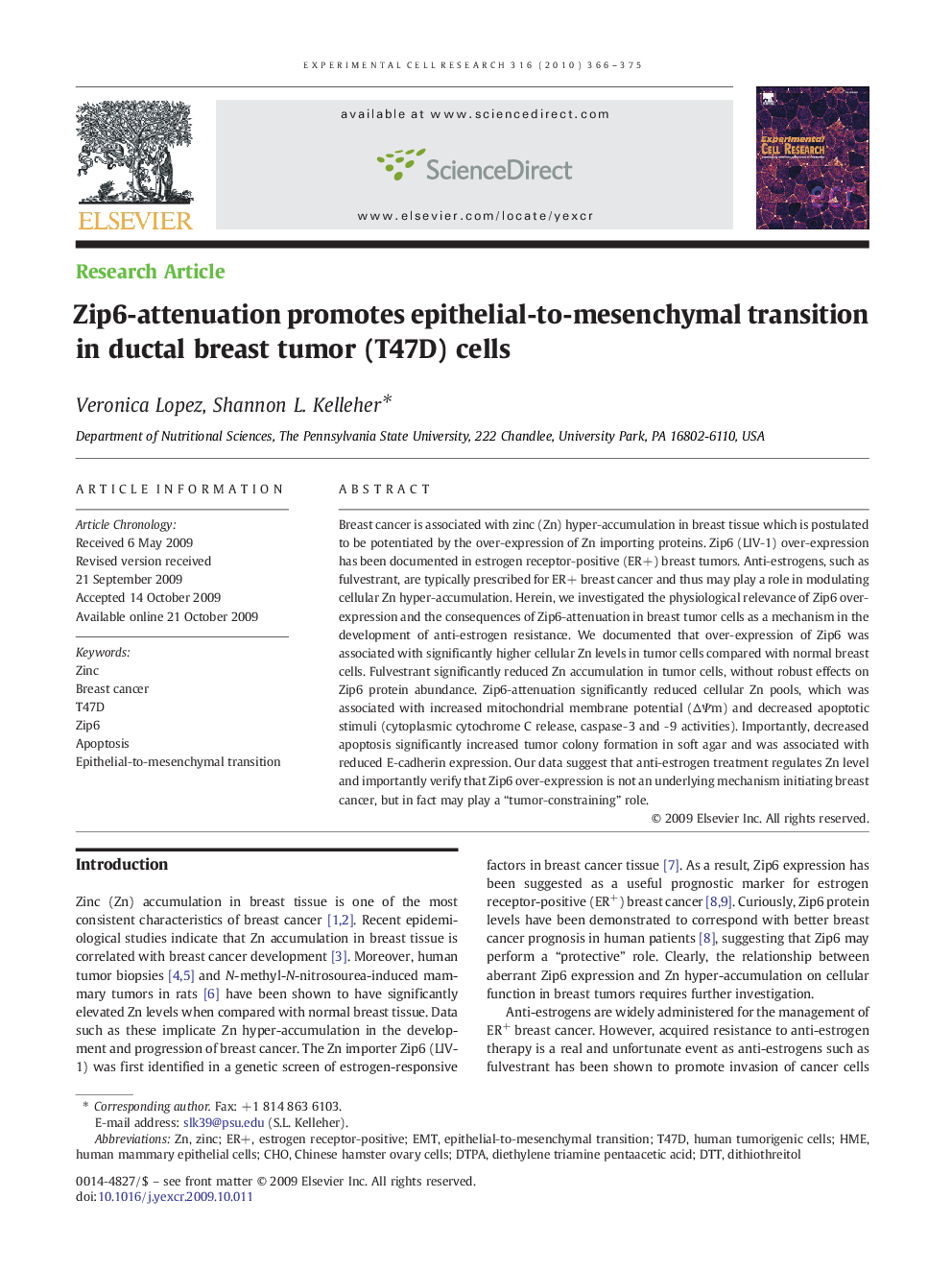| Article ID | Journal | Published Year | Pages | File Type |
|---|---|---|---|---|
| 2131270 | Experimental Cell Research | 2010 | 10 Pages |
Breast cancer is associated with zinc (Zn) hyper-accumulation in breast tissue which is postulated to be potentiated by the over-expression of Zn importing proteins. Zip6 (LIV-1) over-expression has been documented in estrogen receptor-positive (ER+) breast tumors. Anti-estrogens, such as fulvestrant, are typically prescribed for ER+ breast cancer and thus may play a role in modulating cellular Zn hyper-accumulation. Herein, we investigated the physiological relevance of Zip6 over-expression and the consequences of Zip6-attenuation in breast tumor cells as a mechanism in the development of anti-estrogen resistance. We documented that over-expression of Zip6 was associated with significantly higher cellular Zn levels in tumor cells compared with normal breast cells. Fulvestrant significantly reduced Zn accumulation in tumor cells, without robust effects on Zip6 protein abundance. Zip6-attenuation significantly reduced cellular Zn pools, which was associated with increased mitochondrial membrane potential (ΔΨm) and decreased apoptotic stimuli (cytoplasmic cytochrome C release, caspase- 3 and - 9 activities). Importantly, decreased apoptosis significantly increased tumor colony formation in soft agar and was associated with reduced E-cadherin expression. Our data suggest that anti-estrogen treatment regulates Zn level and importantly verify that Zip6 over-expression is not an underlying mechanism initiating breast cancer, but in fact may play a “tumor-constraining” role.
